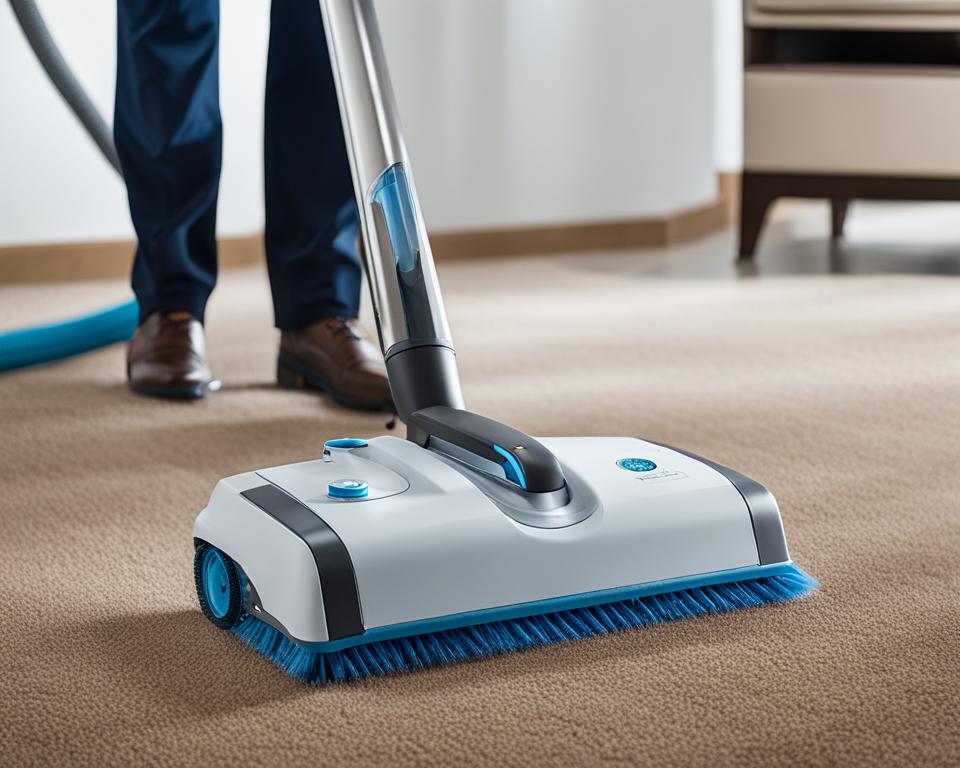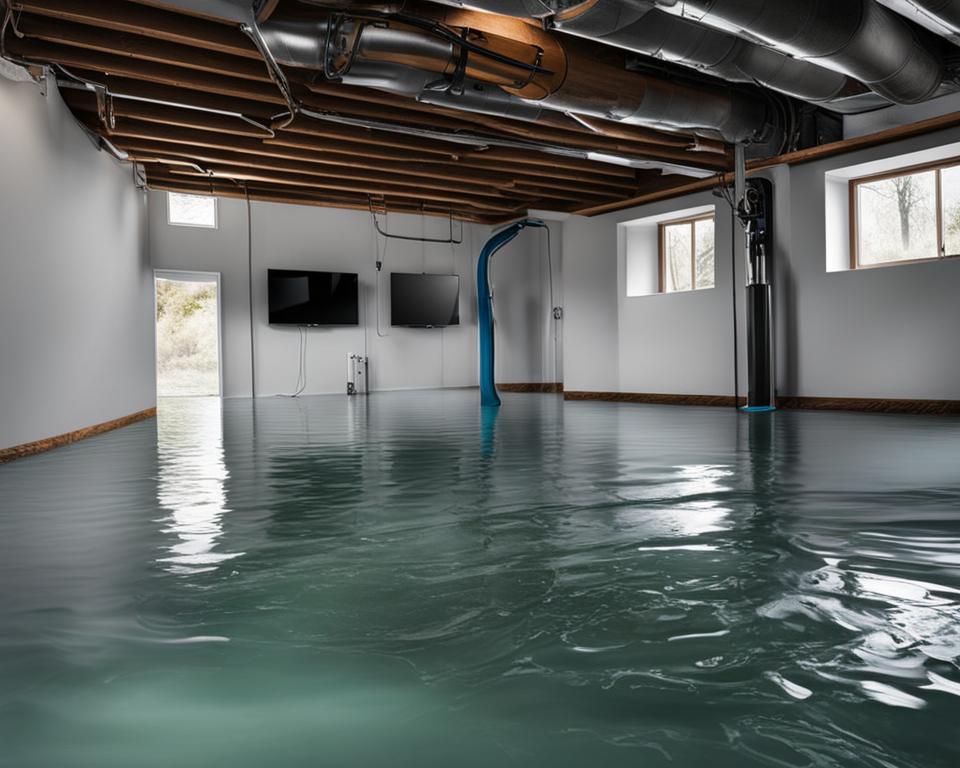The restoration and remediation industry is constantly evolving, and professionals are always on the lookout for advanced water damage restoration equipment to improve efficiency and effectiveness in property recovery. From high-quality restoration equipment to powerful water damage restoration tools, the industry is witnessing the emergence of state-of-the-art restoration equipment designed to tackle the toughest challenges.
Experts in water damage restoration, catastrophe restoration, cleaning and disinfection, contents restoration, fire and smoke damage restoration, forensic restoration, and mold remediation have shared valuable insights into the latest advancements in their respective fields. These insights highlight the importance of using efficient water damage restoration machinery to ensure optimal results and client satisfaction.
Key tools that have garnered attention include moisture meters, water extraction equipment, dehumidifiers, and management safety tools like job site hazard analysis (JHA). The emphasis is on both equipping professionals with the best tools for the job and ensuring the safety of workers in the process.
Key Takeaways:
- Advanced water damage restoration equipment is essential for efficient and effective property recovery.
- Tools such as moisture meters, water extraction equipment, dehumidifiers, and job site hazard analysis (JHA) enhance restoration processes.
- High-quality restoration equipment improves client satisfaction and ensures optimal results.
- The industry is witnessing advancements in technology that enable better communication and data collection.
- Worker safety remains a top priority, with management safety tools playing a crucial role in minimizing accidents and injuries.
The Importance of Management Safety Tools in CAT Restoration
According to restoration professionals specializing in catastrophe (CAT) restoration, management safety tools are of paramount importance in ensuring the safety of workers and preventing accidents or injuries on the job.
One key management safety tool that stands out is the job site hazard analysis (JHA). This tool involves a comprehensive assessment of potential hazards in the workplace, enabling the selection and implementation of appropriate personal protective equipment (PPE) for workers.
The JHA serves a dual purpose: it is not only a legal requirement but also helps create a positive first impression with clients, demonstrating a commitment to safety. By conducting a JHA and regularly updating it as job site conditions change, restoration companies prioritize the safety of their crew members and minimize the risk of accidents.
This emphasis on safety is crucial for both the well-being of workers and the reputation of the restoration company. A strong commitment to implementing management safety tools creates a culture of safety and professionalism, instilling confidence in clients and stakeholders.
It is essential that CAT restoration companies integrate job site hazard analysis and workplace hazard assessments into their standard operating procedures. This proactive approach ensures that potential hazards are identified and addressed before they pose a risk to workers.
Moreover, providing workers with the appropriate personal protective equipment (PPE), as determined through the JHA and workplace hazard assessment, equips them with the necessary tools to perform their duties safely. This not only safeguards their well-being but also allows them to carry out their work with confidence and peace of mind.
By investing in management safety tools and prioritizing safety, CAT restoration companies uphold their responsibility to protect their workforce and promote a safe working environment. Through continuous training and awareness programs, companies ensure that their employees are well-equipped to handle potential hazards and respond effectively in emergency situations.
As the restoration industry evolves, it is crucial for companies to stay up-to-date with the latest management safety tools and advancements in workplace hazard assessment techniques. By doing so, they can ensure ongoing safety, reduce the risk of accidents, and maintain a stellar reputation within the industry.
Advancements in CAT Restoration Tools
Advancements in CAT restoration tools have revolutionized the industry, enhancing efficiency, productivity, and customer service. Notable breakthroughs include the development of compact dehumidifiers, air movers, and air filtration devices (AFDs). These compact tools have been designed to streamline equipment handling on projects and fit into tight spaces, offering convenience and versatility.
The use of compact dehumidifiers allows for easy loading onto trucks and better maneuverability within limited work areas. These portable units efficiently extract moisture from the environment, expediting the drying process and minimizing potential damage. Coupled with the compact design of air movers, which facilitate rapid airflow, the restoration process becomes seamless and efficient.
Moreover, advancements in air filtration devices (AFDs) have elevated indoor air quality during restoration projects. These devices effectively filter contaminants, ensuring a healthier working environment and improved safety for both workers and occupants. With cutting-edge filtration technology, AFDs capture particulates, mold spores, and other harmful particles, keeping the air clean and reducing the chances of respiratory issues.
New Generation CAT Restoration Tools
In addition to the physical tools, technology has played a pivotal role in advancing CAT restoration. Innovative solutions for communication and data collection have elevated efficiency and effectiveness in managing restoration projects. With equipment-mounted technology that seamlessly connects to smartphones through user-friendly apps, restoration professionals can remotely track, monitor, and report progress in real time.
Through these mobile applications, restorers benefit from instant access to critical data, allowing for more informed decision-making and improved communication with clients and third-party representatives. The ability to submit invoice packages quickly enhances professionalism and expedites the overall restoration process.
Advancements in CAT restoration tools have unleashed the potential for highly efficient and effective restoration projects. Compact dehumidifiers, air movers, and AFDs optimize workspace utilization, while technological innovations facilitate seamless communication and data collection. Incorporating these advancements into CAT restoration strategies ensures faster, safer, and more successful restoration outcomes.

The Importance of People in Cleaning and Disinfection
According to professionals in the cleaning and disinfection field, people are the most important tools in this line of work. While there are various devices, equipment, and solutions available, they are only effective if the people using them are properly trained and follow best practices.
Proper training ensures that cleaning and disinfection processes are carried out correctly, eliminating soil and contaminants from surfaces and allowing disinfectants to work effectively. By receiving comprehensive training, professionals gain a solid understanding of the appropriate techniques and products to use, ensuring thorough cleaning and disinfection.
Moreover, people with critical thinking skills and the ability to adapt to changing resources and conditions are highly valued in the cleaning and disinfection industry. In dynamic environments, critical thinking allows professionals to evaluate situations, identify any discrepancies or challenges, and make informed decisions to overcome them. This enables them to find innovative solutions and maintain the highest level of cleanliness and safety.
Reliability is another crucial aspect in the cleaning and disinfection industry. Professionals that have access to reliable resources can rely on accurate and up-to-date information, ensuring the use of the most effective cleaning techniques and disinfectants. By staying informed and utilizing reputable resources, professionals can provide optimal service to their clients.
Best practices are constantly evolving in the cleaning and disinfection industry, and individuals who prioritize continuing education and staying up-to-date with industry standards are invaluable. Staying informed about the latest advancements in cleaning and disinfection tools and methods allows professionals to provide the best possible service, ensuring a safe and healthy environment for their clients.

In conclusion, the role of people in the cleaning and disinfection industry cannot be overstated. Their knowledge, skills, critical thinking abilities, and dedication to best practices are essential for achieving optimal results. By investing in proper training, utilizing reliable resources, and fostering a culture of continuous learning, professionals in this field can consistently provide effective and efficient cleaning and disinfection services.
Advancements in Cleaning and Disinfection Tools
Advancements in cleaning and disinfection tools have revolutionized the industry, offering restoration professionals greater efficiency, effectiveness, and safety in their work. Among the notable advancements mentioned by experts are:
1. Electrostatic Disinfectant Delivery Systems: These cutting-edge systems provide more even coverage and reduce waste by electrostatically charging the disinfectant particles, ensuring thorough and comprehensive disinfection of surfaces.
2. Microfiber Cloths: Highly effective in cleaning and trapping contaminants, microfiber cloths have become indispensable tools for restoration professionals. The microscopic fibers create a larger surface area, allowing for efficient cleaning and superior removal of dirt and germs.
3. UVC and Ionic Systems: Utilizing ultraviolet (UVC) technology and ionization, these systems offer enhanced disinfection capabilities. UVC light destroys pathogens, bacteria, and viruses, while ionic systems release charged particles that neutralize airborne particles, improving air quality. These advancements contribute to more thorough and effective cleaning and disinfection processes.
While these advancements have undoubtedly improved cleaning and disinfection, it is essential to evaluate claims and ensure that the tools being used have been scientifically proven to be effective and safe. Additionally, proper training on the correct use of these tools and the integration of reliable resources remain crucial for maintaining the highest standards of cleanliness and safety in the industry.
FAQ
What are some examples of advanced water damage restoration equipment?
Some examples of advanced water damage restoration equipment include moisture meters, water extraction equipment, dehumidifiers, and air movers. These high-quality restoration tools are designed to efficiently and effectively remove water and moisture from damaged properties.
Why are management safety tools important in CAT restoration?
Management safety tools, such as job site hazard analysis (JHA), are crucial in CAT restoration to ensure the safety of workers and prevent accidents or injuries. Conducting a JHA helps identify potential hazards in the workplace and select appropriate personal protective equipment (PPE) for workers, prioritizing their safety and minimizing risks.
What advancements have been made in CAT restoration tools?
Advancements in CAT restoration tools include more compact dehumidifiers, air movers, and air filtration devices (AFDs). These state-of-the-art restoration equipment make it easier to handle equipment on projects and fit into tight spaces. Additionally, technology has enabled improved communication and data collection, allowing for better tracking, monitoring, and reporting of restoration projects.
Why is proper training important in the cleaning and disinfection industry?
Proper training is crucial in the cleaning and disinfection industry to ensure that processes are carried out correctly and effectively. Trained professionals can eliminate soil and contaminants from surfaces and allow disinfectants to work efficiently. Critical thinking skills and the ability to adapt to changing resources and conditions are also valued in this industry.
What are some advancements in cleaning and disinfection tools?
Advancements in cleaning and disinfection tools include electrostatic disinfectant delivery systems, which provide more even coverage and reduce waste. Microfiber cloths are also effective in cleaning and trapping contaminants. The use of UVC and Ionic systems has enhanced disinfection processes. However, it is important to evaluate claims and rely on reliable resources to ensure the safety and effectiveness of these tools.

Leave a Reply